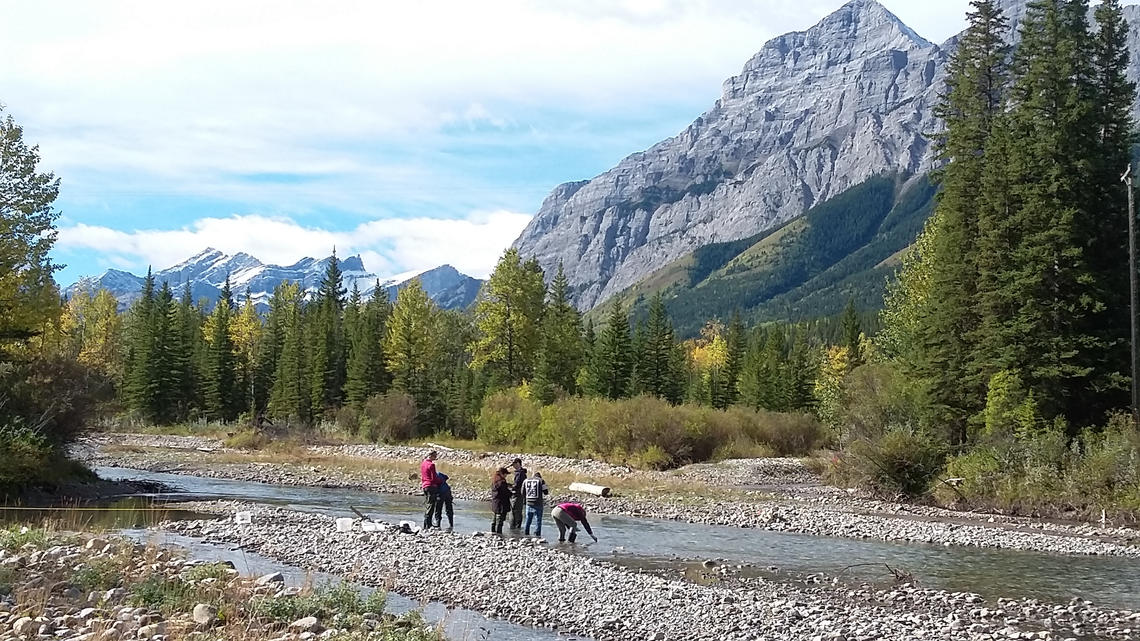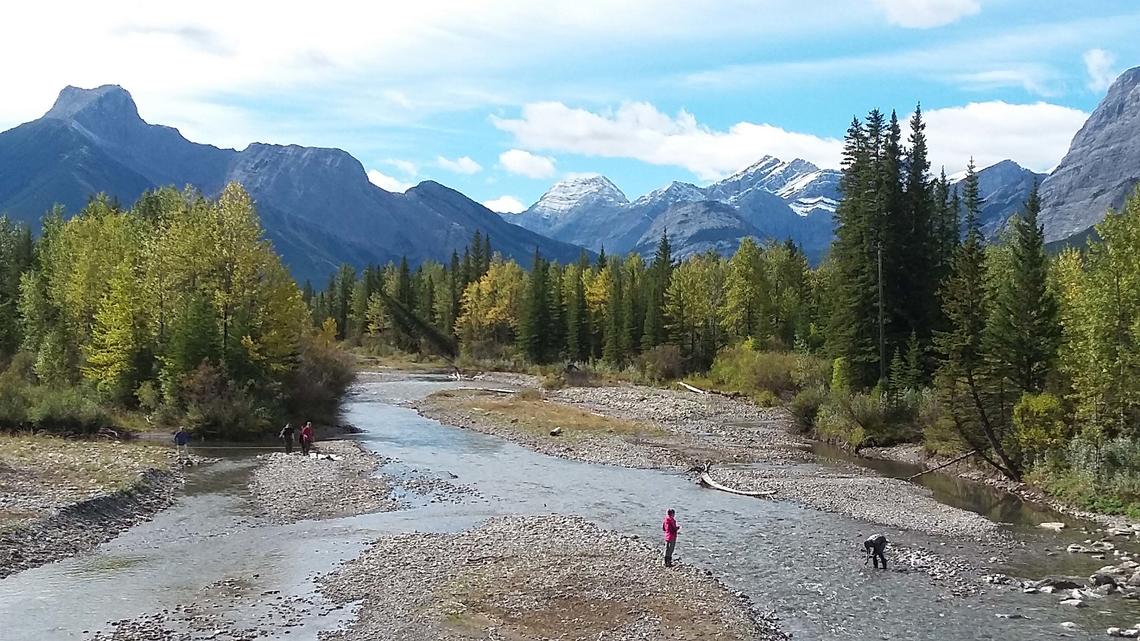Jan. 18, 2022
Student discovers link between wildfire smoke and river water quality

While Deep Purple once warned us about smoke on the water, a University of Calgary undergraduate research study discovered smoke in the water could be the real danger.
Joshua Evans, BSc (Hon) ’20, conducted a study using historical data collected over the course of 18 years by fellow students in Environmental Science Field Course I (ENSC401) in the Faculty of Science to see if wildfire smoke was getting into the water of the Kananaskis River, west of Calgary. The study was recently published in the journal Water Resources Research.
What he found was, in years where there were high levels of smoke due to forest fires, there was an increased concentration of biomass markers associated with wildfire smoke present in the surface water of the river, particularly potassium.
“We know that forest fire smoke emits more potassium than other types of smoke, so you can use that as a biomass tracer,” says Evans, who is now working on his master’s degree in geomatics at the University of British Columbia.

Students take water samples during a field course.
Mary Reid
While potassium itself is not dangerous to animals or humans, says Evans, its increased presence in the river water suggests other, more dangerous chemicals associated with wildfire smoke would also be present.
“Wildfire smoke has a lot more toxic things in it than people realize,” says Evans. “There’s a lot of carcinogens, and there’s a lot of heavy metals, like mercury.”
Evans says the increased presence of these chemicals in the water could be quite concerning, especially for the aquatic wildlife, which can be quite sensitive to chemical inputs. In particular, the macroinvertebrate (insect) species in the river, which are often used as indicators of river health, could be especially affected.
“Those little guys could be affected, and that has cascading effects on the ecosystem,” says Evans.
As wildfires intensify due to climate change, Evans says he expects to see concentrations of these chemicals increase in the water.
This is a warning signal for one of the effects of climate change that we don’t really think about, which is water pollution due to smoke.
Evans credits the ENSC401 course for sparking his interest in this research area.
“It was one of the most fun and most important courses I took in my undergrad,” he says.
Led by Dr. Mary Reid, PhD, the course takes students out of the classroom and into the field, where they spend time working out of UCalgary’s Barrier Lake field station, engaging in activities like collecting water samples such as those that provided the basis of Evans’ research. Data are archived for monitoring purposes, with the water chemistry data now posted in a national database.
"Field courses can provide valuable environmental data that other agencies or research programs may not be able to afford,” says Reid. Additional air and precipitation data collected at the field station were also critical to Evans' study.
Evans says it is critical for undergrads to get hands-on experiences, especially environmental science students who may often find themselves working out in the field.
Jessica Theoret
“Getting your hands dirty and doing the work is critically important,” he says. “Getting people out and getting people engaged with the environment is so important.”
Doing this field work may also present students with the opportunity to find interesting research projects, like it did for Evans. According to Reid, undergraduate research doesn’t have the same pressure on it as graduate research because there isn’t the need to get results and advance knowledge in the field.
“The benefit of undergraduate research is that it can be high risk because there is no thesis or publications riding on the outcome,” says Reid.
This allows projects like Evans’ to come to fruition, and undergrad students can engage in research that is more novel and may be considered “dubious” to more senior researchers.
“You don’t have those pressures there, so you can totally have free rein and think of something crazy and do it,” Evans says.
For example, students could build off Evans’ study, which indicates more work is warranted on the ecosystem and health consequences of increased smoke constituents in the water.
Whether students decide to do further research or not, Evans encourages them to take the opportunity to do field work.
“It’s critically important to engage with science out in the world,” he says. “It’s where you get your juices going to understand what’s possible, and it’s where a lot of innovation stems from.”

Mary Reid






